Dubai’s melting pot culture means every cuisine in the world is represented here, with budget versions – if you know where to look. Ravi in Al Satwa is a local legend, which serves huge bowls of Pakistani curry and tea-tray size naan breads for between Dhs30-40. For traditional Levant street food, like the shawarma (chicken wrap with tahini), head to Zaroob (www.zaroob.com) or Zaatar Z Weit (www.zaatarwzeit.net) for budget belly-busters.
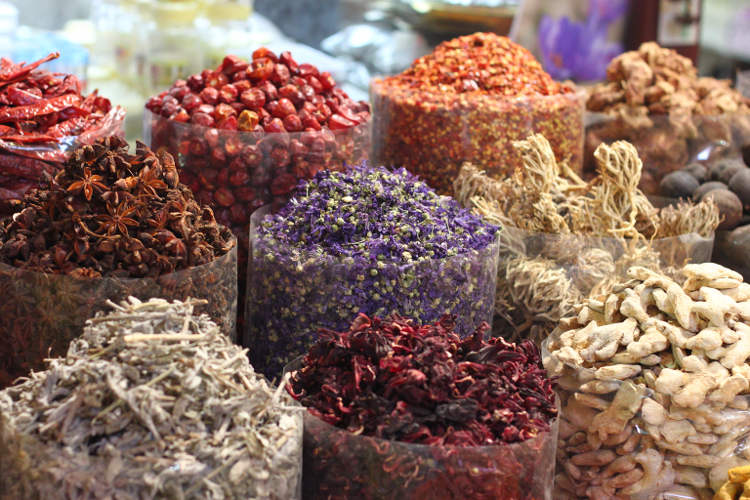
The Metro, a cheap alternative to getting around Dubai. Image by Fabio Achilli / CC BY 2.0
Forget taxis and plump for the Metro instead. Dubai’s two-line driverless trains offer some of the cheapest public transport trips in the world. Buy a Nol card and top it up (www.nol.ae), from Dhs1.8 for a short hop to Dhs5.8 for a longer trip (it’s shut Friday morning and after midnight). You can even go VIP and travel Gold Class, which has free Wi-fi. This is Dubai after all.
Dubai’s recently invested in a couple of rental bike schemes. Either on Sheikh Mohammed bin Zayed Boulevard (which encircles Burj Khalifa and the Dubai Mall) or along the Dubai Marina promenade, you can rent sturdy bikes from Dhs15 for 30 minutes (www.bykystations.com). In the last few years Dubai’s become increasingly pedestrian-friendly with cafes, restaurants and so on popping up along what would previously have been barren streets. Take in some of the city’s best views from the saddle, from the neon lights of Dubai Marina at night, to the neck-aching sight of Burj Khalifa.
Dubai’s infamous expensive bars do throw a thirsty traveller a bone or two in the shape of weekly ladies’ or gents’ nights, where a selection of drinks are free. Almost every bar in the city will have a ladies’ night (often a Tuesday or Wednesday); gents’ nights are a little rarer but they do exist. For a view over the Dubai Marina and the beach, try Maya at Le Royal Meridien on a Sunday or for a busy girlie night out, there’s perennial downtown favourite Left Bank on Wednesdays.

Spice shopping in the traditional souks, Dubai. Image by Elroy Serrao / CC BY-SA 2.0
Dubai Mall might be the biggest in the world, but it’s pretty pricey. Head to the Creek to shop like it was 100 years ago in the traditional souks. Buy gold, frankincense, or spices such as saffron and cinnamon on the Deira side, while over on the Bur Dubai bank, snap up pashminas and Arabian style slippers. Remember to haggle hard for a bargain. Take an abra (a small Arabic boat) to get across the Creek for Dhs1.
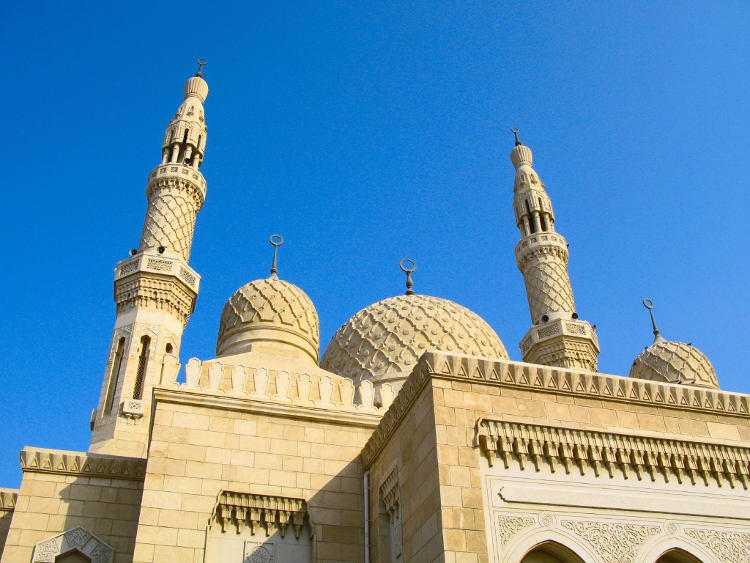
Step inside Jumeirah Mosque, Dubai's largest, for a free tour. Image by Paul Hart / CC BY 2.0
Jumeirah Mosque is the city’s largest mosque. Daily tours (except Fridays) take place at 10am for free, run by the Sheikh Mohammed Centre for Cultural Understanding. The tours run for 75 minutes and visitors are encouraged to ask any questions they might have about Islam and Emirati culture. There are some lovely cafes nearby. Modest dress (ie covering knees and shoulders) is required inside the mosque.
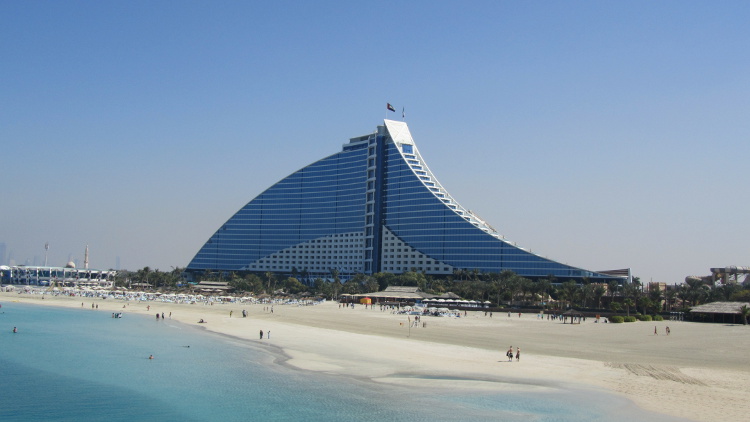
Jumeirah Beach is full of amenities for families, but won't leave your wallet empty. Image by David Jones / CC BY 2.0
Dubai has over 40km of golden sand coastline but much of it has been land-grabbed by five-star hotels that charge an expensive daily rate for access. Jumeirah Beach Park is a family-style, life-guarded public park with a beach that has sunloungers, umbrellas and roving ice cream sellers, as well as shady, grassy areas, photogenic palm trees and a small fast food café. It costs Dhs5 per person for entry.
You could be forgiven for thinking that Dubai is all skyscrapers and six lane highways. Hidden away opposite Business Bay is Al Safa Park, built at a time when two-storey villas were all that could be seen from here. This landscaped park is home to plenty of free barbeque pits, families with their entire kitchen decamp here every weekend. It costs Dhs3 to enter and is also home to a weekly flea market and its own community centre-café, The Archive (facebook.com/TheArchiveDubai), that promotes Middle Eastern culture.
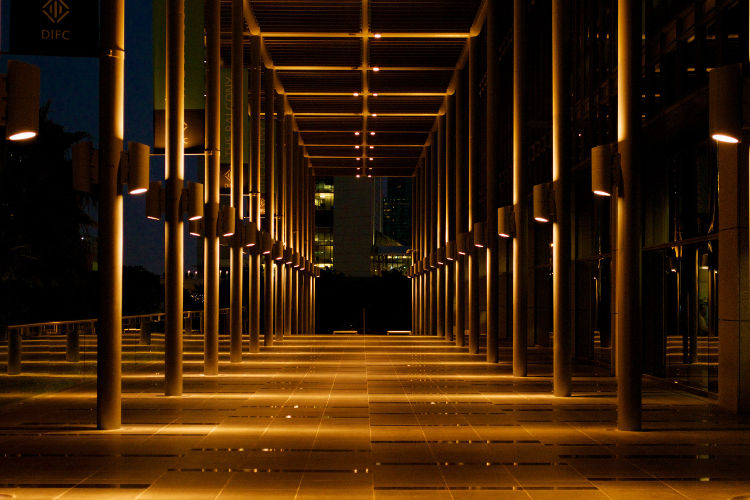
The Dubai International Finance Centre's galleries have free monthly art nights. Image by Nabil Abbas / CC BY-SA 2.0
Yes, there’s more to Dubai than shopping! The city is a hub for Middle Eastern artists working over a number of disciplines. For edgier galleries, head to Al Serkal Avenue in Al Quoz (www.alserkalavenue.ae), a cul de sac of creativity in an industrial neighbourhood. For more classic exhibitions, Dubai International Finance Centre’s (DIFC) clutch of galleries have free monthly art nights, where the city’s hipsters mingle (www.difc.ae/art-nights-gate-village).
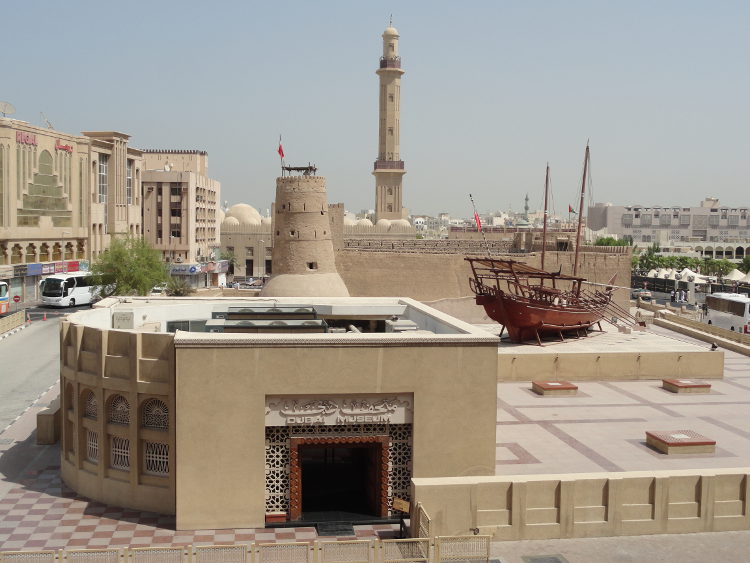
Explore the Dubai Museum in Al Fahadi Fort, the oldest building in Dubai, for free. Image by Fabio Achilli / CC BY 2.0
Life in Dubai was wildly different 50 years ago. The city has grown from a small pearl diving and trading community based around the Creek to what you see today in only just over 40 years. Discover what Dubai was like for the Bedouins and Emiratis at the Dubai Museum in the Al Fahidi Fort for free. It won’t win any awards for modernity but it’s an interesting portrayal of a way of life that’s changed beyond recognition.